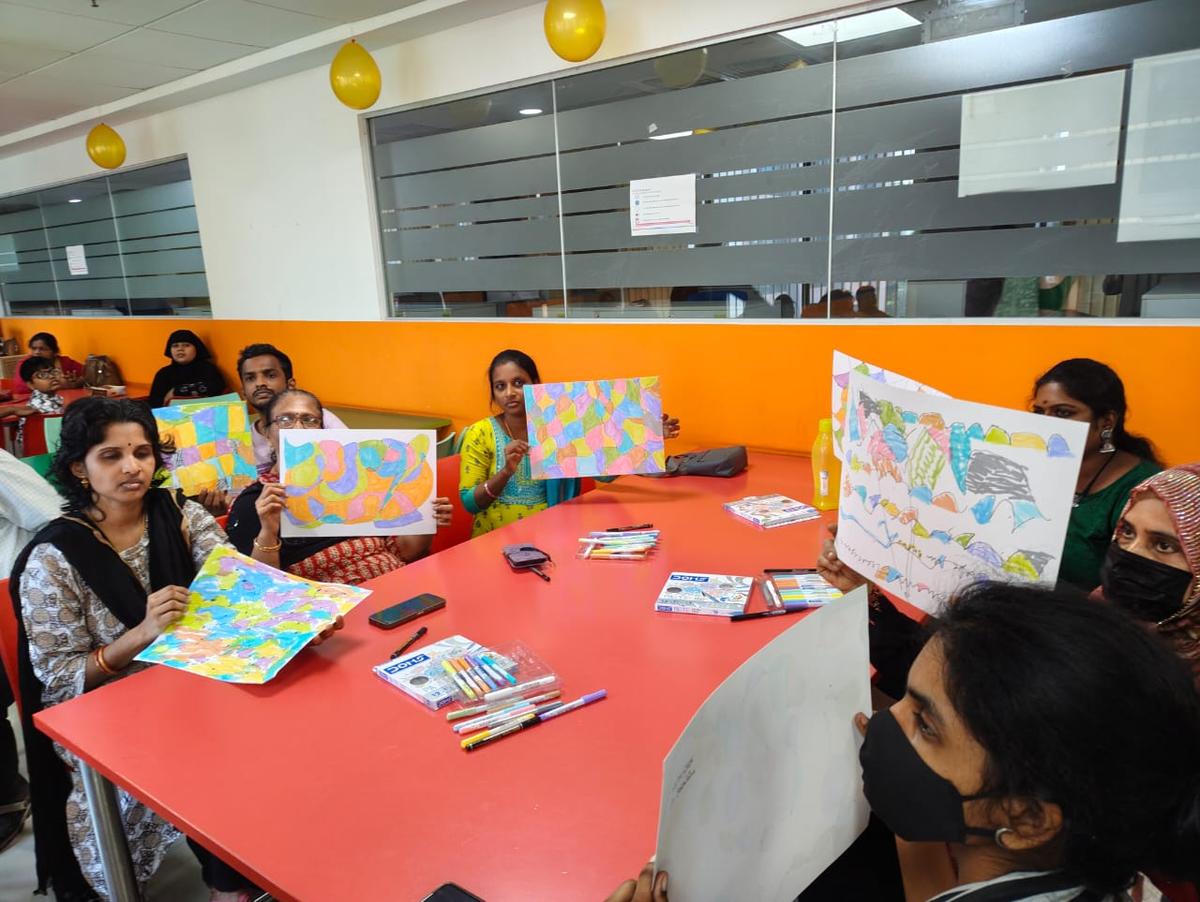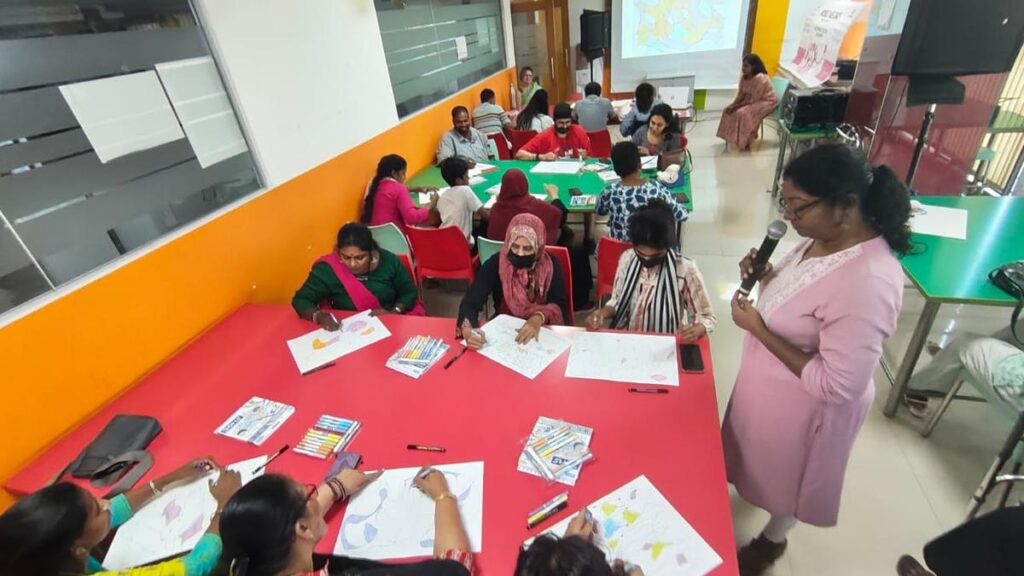Sujatha Karthik’s hands felt number than usual while waiting to wield the brush. Her right leg was acting up. And a cough was not helping matters. The scene shifted and the change was dramatic when she joined 50 other participants in the room to sketch neuron-like lines and shapes.
“For 45 minutes, I forgot all the emotions I carried with me to immerse myself in drawing. I felt relaxed,” says Sujatha, a Velachery resident and a mother of two.
Since being diagnosed with Multiple Sclerosis in 2020, Sujatha had not bothered to “trouble” her painting brushes, and she went into this drawing effort.
Multiple Sclerosis Society of India Chennai chapter organised an art session on May 3, 2025 at the Bosch office off Greams Road, offering those with MS a platform to express emotions, release inner tension and reframe their thoughts. The workshop was a prelude to the World MS Day (May 30). No prior experience of painting was needed.

Common symptoms such as muscle weakness, numbness, fatigue, and difficulty with coordination and balance and blurred vision discourage those with MS from pursuing art as a therapy. Therapists say any art when pursued by those with neurological disorders can help increase their confidence levels.
Sathya Ganapathi, who facilitated the workshop, chose neurographic art, developed by Russian psychologist Pavel Piskarev for its free-flowing method that is fun and meditative.
Meenakshi Nandakumar, a yoga therapist and a person with MS, says they need more artists organising such workshops.
Ann Gonzalvez, chairperson, MSSI Chennai, says multiple sclerosis affects cognition and also causes depression.
“These are just two of the many invisible symptoms associated with MS. We at MSSI Chennai Chapter chose art as a medium to deal with these symptoms,” says Ann. She adds, “The chapter welcomes those with MS to attend its monthly meetups and participate in occupational and art therapies that will empower them to lead quality lives.”
For details, visit www.mssocietyindia.org
What the experts say about art therapy
‘Scribbling can be fun’
I avoid going with a plan while conducting a workshop for a new audience. In this case, I was conducting a session for persons with multiple sclerosis for the first time so I adapted the neurographic art to suit the group.
Brush pens were chosen as they are easy on the hands (colour pencils can be difficult to hold; water colours can be spilt; and thin sketch pens can be difficult to grip).
I chose pastel shades of the colours so that they are not too harsh. Colours have a soothing effect on the mind. Neurographic art comprises free flowing lines from one end of the paper to the other and it can be practised at home. One does not have to go looking for an art instructor. I suggest people explore whatever they are curious about. Buy colouring books for adults and choose any medium one is comfortable with. Scribbling can be fun.
Sathya Ganapathi, freelance graphic designer who works with special children and as a yoga therapist
‘Art therapy helps self-expression’
Art is an important treatment modality that occupational therapists adopt in treating patients with clinical depression, which can be applied to neurological diseases and neurogenerative disorders. The activities that help with emotions include journaling, line art, postcard designing, creating a family sculpture with clay and drawing feelings in a heart formation.
Scribbling, finger painting, blow painting, charcoal painting, mandala art, zentangles and painting with eyes closed are activities that help with relaxation. The best part of all these activities is that one need not take it only if you have a condition. These are leisure activities for everyone.
No art activity should be imposed on the person, but one must be provided with the tools or supplies so that the person is able to express emotions and explore thoughts. We have seen than art therapy helps one express better, thereby improving mood and social interactions.
Sarah Daniel, occupational therapist
‘Warli art to elevate the mood’
During the pandemic, I taught members of Parivarthan for Parkinson’s warli art, which I chose as it can elevate and enhance even a simple design. Drawing and filling those simple, geometric patterns with colours is also an exercise apt for those with Parkinson’s Disease.
In authentic warli, we mainly work around with one colour, so I ask them to choose their favourite, any medium to bring about a feel good factor. There are plenty of short YouTube tutorials that can help one learn how to draw warli art on white paper. One just has to make sure the art is easy and the outcome is nice.
Himani Bhatnagar, freelance artist
Published – May 10, 2025 10:28 pm IST
Source:https://www.thehindu.com/news/cities/chennai/workshop-explores-art-as-therapy/article69562040.ece

